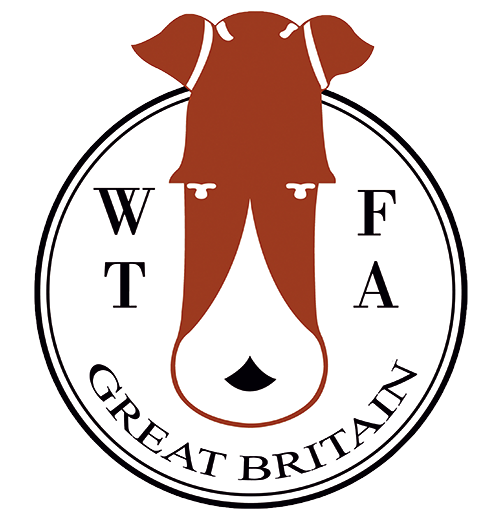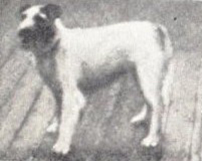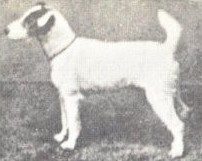Old Tip
Although early fanciers thought they would produce a terrier capable of keeping up with hounds, this fad was, fortunately, short lived because a too large and cumbersome animal was developing - it was overly large to go to ground and not sufficiently fleet of foot to keep pace with the pack.
The first wire fox terrier which is authentically recorded was OLD TIP (top). He was bred by the Master of the Sinnington Hounds in Yorkshire around 1866. The dog was never shown but was bred and used solely for work. Although his actual pedigree is unknown Old Tip is the source from which all our present-day wires emanate.
Old Tip sired three champion sons from dams of unknown breeding - one of these, PINCHER, born 1869, was destined to fame in the history of wires. He was mated to his own daughter and this union produced OLD JESTER in 1875 who was shown but did not appear on the bench until he was 5 years old. Old Jester in turn produced many winners but we have cause only to remember YOUNG JESTER born 1880.
PINCHER
OLD JESTER
YOUNG JESTER
When Young Jester sired KNAVESMIRE JEST in 1886 the wire, as a breed, was beginning to show improvement, heads were lengthening, ears and conformation improving. Knavesmire Jest sired the great stud dog, MEERSBROOK BRISTLES in 1892 who was the first famous sire to show the hound markings which are so beloved to this day. Bristles sired many winners and was eventually sold to a Mr. Keyes of Boston, USA for £500 - an enormous sum of money at that time. Bristles' greatest son was MEERSBROOK BEN, born 1894, who was the grandsire of CACKLER OF NOTTS b. 1898 and he sired more than 100 winners. It is doubtful that there is a wire fox terrier living today whose parentage does not trace back to this dog. The suffix "of Notts" will for ever have its place in fox terrier history belonging as it did to probably the most famous breeder ever of wires and smooths, Kathleen, Duchess of Newcastle. CAESER OF NOTTS, sired by CACKLER OF NOTTS, was the favourite and constant companion of King Edward VII and did much to popularise the wire fox terrier at the beginning of the 20th century.
KNAVESMIRE JEST
Meersbrook Ben
MEERSBROOK BRISTLES
Cackler OF Notts









